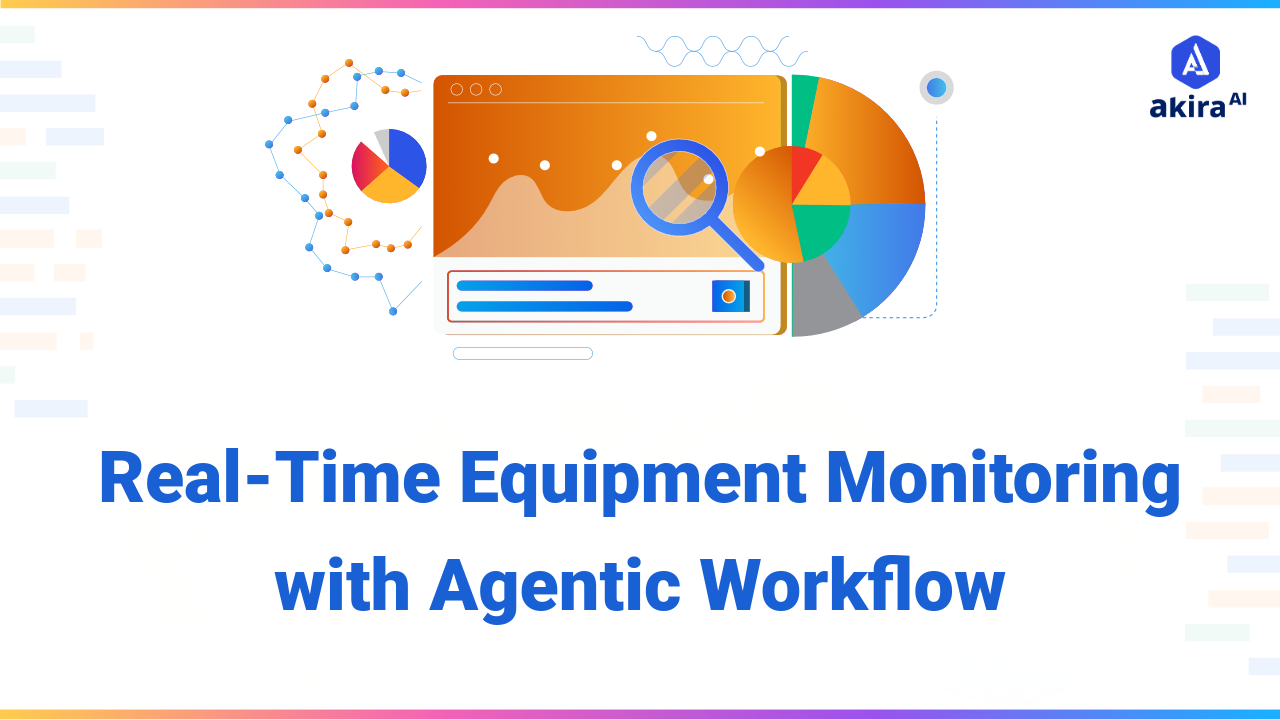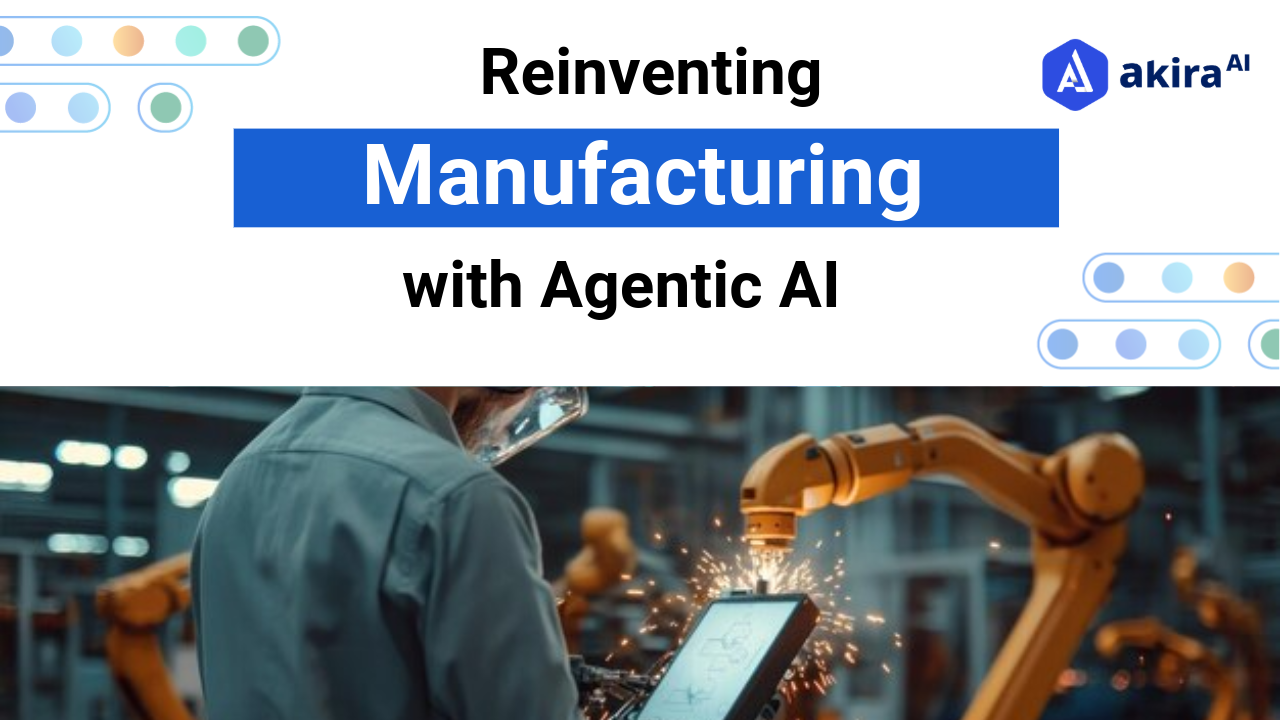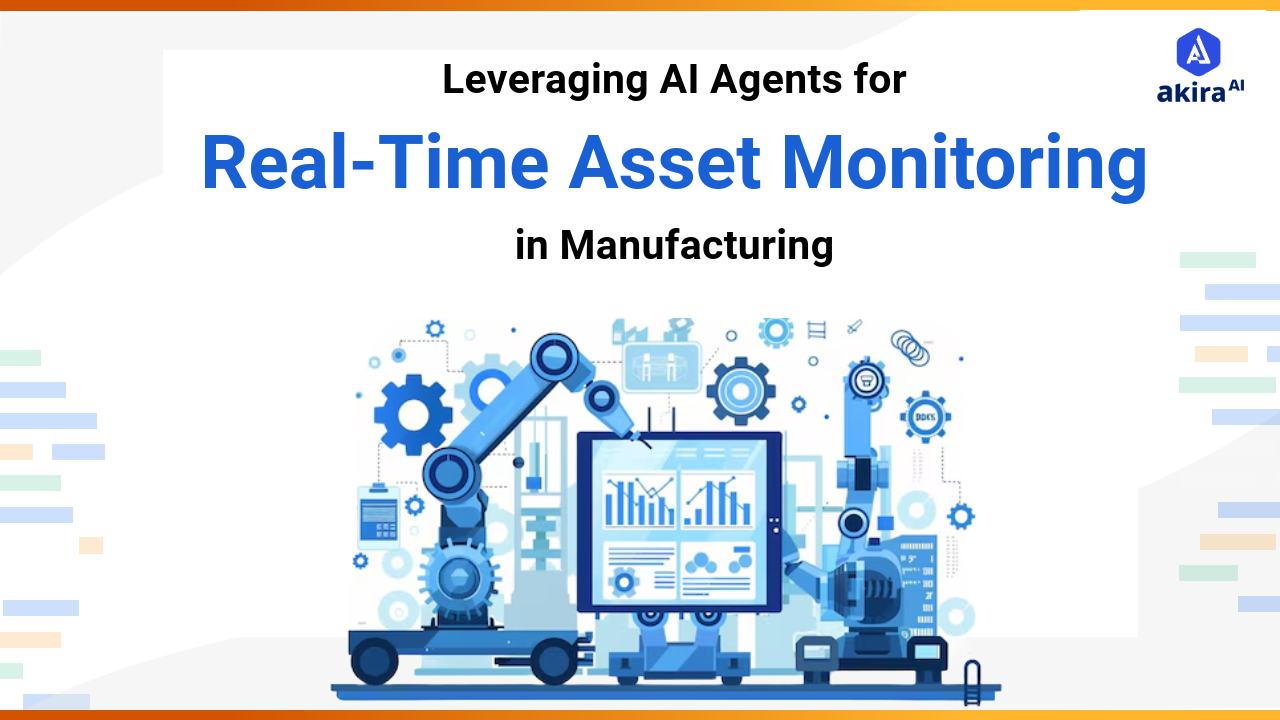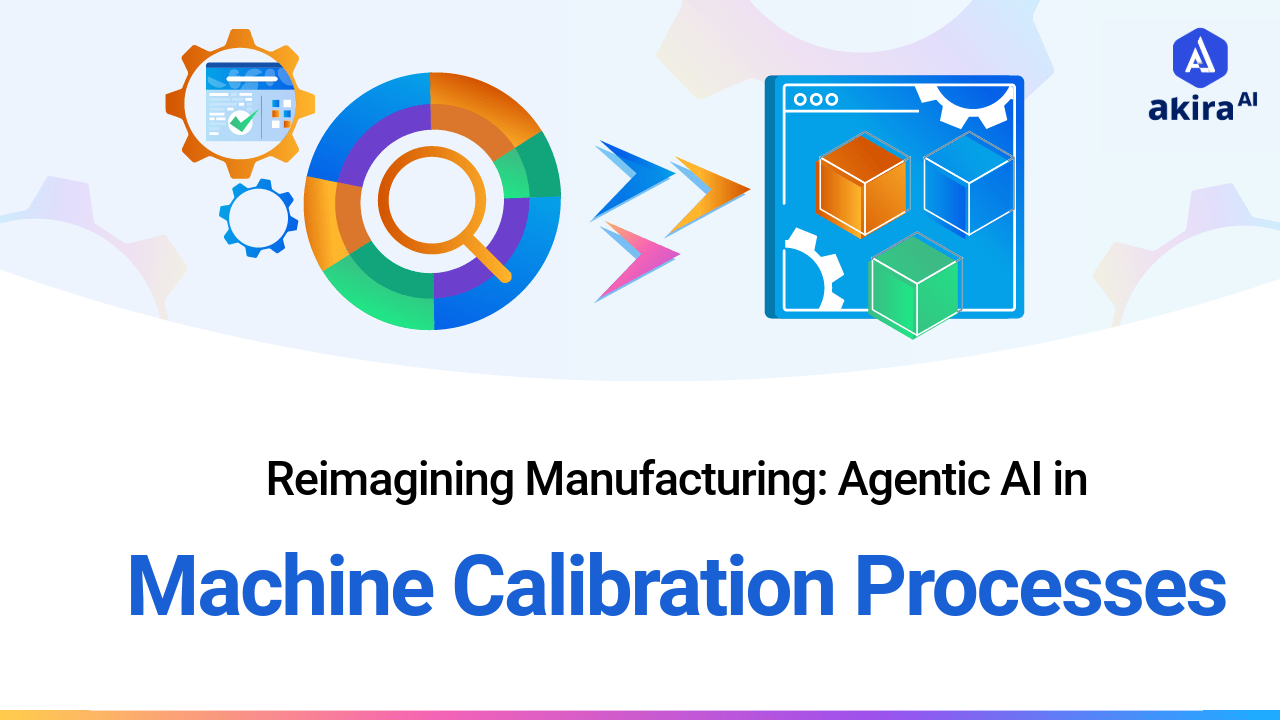Key Insights
In manufacturing, real-time equipment monitoring powered by agentic AI is revolutionizing efficiency. By leveraging AI insights and IoT sensors, manufacturers can detect issues early, minimizing downtime. This proactive approach enhances safety and quality control, leading to smoother operations. Explore how these innovations are shaping a more responsive and competitive manufacturing landscape.

In a manufacturing business, every component must function seamlessly, much like cogs in a well-oiled machine. So, what strategies can manufacturers implement to maintain this efficiency? The answer lies in real-time equipment monitoring. By utilizing AI-driven insights, factories can closely monitor machinery and identify potential problems early. That’s how AI Agents help businesses operate at their best and achieve much higher efficiency rates behind the scenes. In this blog, we'll outline how these innovations are altering the manufacturing sector and what it looks like headed forward.
What is Real-Time Equipment Monitoring in Manufacturing?
Real-time equipment monitoring is associated with frequent observation and analysis of the condition of a manufacturer’s machinery and equipment. This monitoring, through sensors, data analytics, and insights, helps gain a status overview of the operations to allow any necessary remedial action to be taken and achieve the right timing for the maintenance of operations. Implementing a real-time production monitoring system allows organizations to assess equipment health, production rates, and overall efficiency. This system showcases inconsistencies or possible problems at once, so the chances of the system collapsing are low due to timely detections.
A Brief Overview of Real-Time Equipment Monitoring
Real-time equipment monitoring is a critical practice in manufacturing that ensures machinery operates at peak efficiency. This process is based on the constant data acquisition of numerous parameters reflecting the state of the operation by the IoT sensors. The analysis of the data can prove very valuable for manufacturers so that the downtime of the equipment can be minimized.
By leveraging advanced data analytics, manufacturers can proactively address issues before they result in costly breakdowns. Additionally, real-time monitoring enhances decision-making, enabling organizations to optimize production processes and resource allocation. The introduction of autonomous agents further enhances these systems by providing intelligent analysis and predictive capabilities.
Traditional vs. Agentic AI Real-Time Equipment Monitoring
|
Aspect |
Traditional Equipment Monitoring |
Agentic AI-Based Real-Time Equipment Monitoring |
|
Data Collection |
Manual checks and periodic reporting |
Continuous, automated data collection |
|
Response Time |
Reactive maintenance |
Proactive, with predictive capabilities |
|
Insight Generation |
Limited insights and historical data |
Real-time, actionable insights through AI analytics |
|
Maintenance Strategy |
Scheduled maintenance with potential downtime |
Predictive maintenance based on real-time data |
|
Operational Efficiency |
Lower due to delays and human error |
Higher, with faster response times and improved processes |
Akira AI Multi-Agent in Action
The Akira AI system is a groundbreaking approach to real-time equipment monitoring that employs various autonomous agents. These agents are very specific, each performing only one task, but collectively, they offer proper supervision of manufacturing processes. Below is a simplified process flow illustrating how these agents collaborate:
-
Data Collection Agent: This agent collects real-time data from the sensors affixed to machinery, including temperature, vibration, and speed of operation. It ensures that all data is collected correctly and similarly.
-
Data Analysis Agent: This autonomous agent is useful once the data is collected; it parses the data to identify performance indicators, patterns, deviations, or conditions that are demanding the attention of the system. It is important to help draw decision-making conclusions based on the findings of the analysis.
-
Alert Agent: It should any performance metrics fall outside of predefined thresholds, this agent notifies operators and maintenance teams, ensuring timely interventions. This capability is essential for minimizing downtime and addressing potential issues before they escalate.
-
Maintenance Scheduling Agent: From the insights of the data analysis agent, this agent schedules the predictive maintenance to ensure maximum working time and the increased service life of the equipment. It works proactively with maintenance schedules to avoid causing interferences in operations.
Use Cases and Application of Real-Time Equipment Monitoring
-
Predictive Maintenance: AI-driven insights enable manufacturers to predict equipment breakdowns. This approach provides for intervention before the machine is fully down to minimize unanticipated downtime and its related costs.
-
Energy Management: Regular energy use tracking allows manufacturers to determine areas of losses and change factors that decrease expenses and harm the environment. This is particularly essential given that organizations are interested in operating with sustainability initiatives with excellent profitability standards.
-
Quality Control: Constant evaluation allows for maintaining the quality of the produced items at the set level. Thus, operators can correct their errors immediately and help decrease the number of non-conforming products, thereby improving product quality.
-
Supply Chain Optimization: Tracking equipment performance in real-time enhances inventory management and production scheduling. By aligning maintenance activities with operational needs, manufacturers can improve their responsiveness to market demands and customer requirements.
-
Safety Monitoring: Continuous monitoring of equipment can help identify unsafe conditions, ensure compliance with safety standards, and reduce workplace accidents. By proactively addressing potential hazards, manufacturers can create a safer work environment for their employees.
-
Data-Driven Decision-Making: Real-time insights support strategic decision-making, allowing manufacturers to respond swiftly to changing market conditions. With access to accurate and timely data, organizations can make informed choices that align with their business objectives.
Operational Benefits of Real-Time Equipment Monitoring
-
Increased Productivity: By 2025, it is predicted that autonomous agents will take up to 80% of recurring tasks in organizations. Since repetitive and routine operations can be performed by the system, human operators can tackle more challenging problems.
-
Enhanced Efficiency: Studies indicate that these agents can improve efficiency by up to 30%. This is achieved through streamlined processes, reduced downtime, and optimized resource allocation.
-
Cost Savings: Manufacturers can obtain large savings in repair expenses and avoid more expensive cases of unscheduled downtime with predictive maintenance. It facilitates the management of financial resources and enhances profit-making.
-
Improved Decision-Making: Access to AI-driven insights enables better strategic decisions based on real-time data. Organizations can quickly adapt to market changes, optimize operations, and align their strategies with customer needs.
-
Reduced Maintenance Costs: With proactive maintenance strategies driven by agentic AI, manufacturers can extend equipment life and reduce the frequency of major repairs. This not only saves money but also improves overall equipment reliability.
-
Enhanced Competitive Advantage: Companies leveraging real-time monitoring can respond more quickly to market demands and technological changes. This agility gives them a significant edge over competitors who may rely on outdated monitoring methods.
Technologies Transforming in Real-Time Equipment Monitoring
Several technologies are currently reshaping the landscape of real-time equipment monitoring:
-
IoT Sensors: IoT devices continuously collect data from machinery, enabling seamless integration into existing operations. The proliferation of IoT technology has made real-time data collection more accessible and cost-effective for manufacturers.
-
Machine Learning Algorithms: The ML algorithms analyze historical data patterns to accurately predict future performance issues. Learning from past data enhances the effectiveness of predictive maintenance strategies.
-
Cloud Computing: Cloud computing facilitates storing and processing large volumes of data generated by monitoring systems. Cloud solutions offer scalability and flexibility, allowing manufacturers to expand their monitoring capabilities.
-
Edge Computing: This technology processes data closer to the source, reducing latency and allowing for faster insights and responses in manufacturing environments. It allows manufacturers to make immediate adjustments without relying solely on centralized systems.
-
Big Data Analytics: Advanced analytics tools help manufacturers extract meaningful insights from massive data sets, enabling informed decision-making. These tools can identify trends and correlations that may not be apparent through traditional analysis methods.
-
Digital Twins: This emerging technology creates virtual replicas of physical assets, allowing manufacturers to simulate equipment performance and optimize operations before implementing changes.
The Future of AI Agents for Real-Time Equipment Monitoring
The future of AI-driven insights in manufacturing is promising, with several trends expected to shape the industry:
-
Increased Adoption of Autonomous Agents: As AI technology matures, more manufacturers will integrate autonomous agents to enhance monitoring capabilities and reduce human error. This shift will drive efficiency and improve overall operational performance.
-
Enhanced Predictive Capabilities: As the use of machine learning increases, it will be easier to predict or, at least, get closer to the right decision of what will fail and when maintenance will be required. This will also reduce the time that equipment takes to be out of service and enhance the planning and execution of maintenance.
-
Integration with Supply Chain Management: Real-time monitoring will get well integrated with the supply chain logistics of the production processes. The effect of such an integration will be enhanced supply chain responsiveness and flexibility.
-
AI-Driven Customization: Future monitoring systems may offer more personalized solutions tailored to specific industry needs. Such a high level of customization will enable manufacturers to respond to specific challenges and design operations solutions correspondingly.
-
Collaboration Between AI and Human Workers: The future will likely see a harmonious collaboration between AI agents and human workers, where each complements the other's strength. It will lead to improved productivity, job satisfaction, and innovation within the workforce.
Conclusion: AI Agents for Real-Time Equipment Monitoring
The need for real-time equipment monitoring in manufacturing is undeniable. By integrating AI-driven insights, companies can significantly enhance their operational capabilities and maintain equipment more effectively. This proactive approach not only identifies potential issues before they escalate but also streamlines maintenance processes. With agentic AI facilitating constant monitoring, the potential for increased productivity and reduced downtime is substantial. As manufacturers continue to embrace these advanced technologies, they will play a crucial role in shaping the future of the industry. The adoption of real-time monitoring solutions will not only improve efficiency but also foster innovation, positioning companies for long-term success in a competitive landscape.


